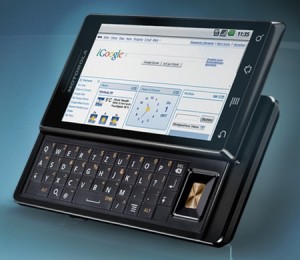It seems that there is a lot of confusion out there when it comes to cell phones. In my last post, I explained the following cell phone facts:
1) The definition of a “smart phone”.
2) The definition of a “dumb phone”.
3) The top five service providers (cell phone carriers) in the United States and one very popular phone from each of the five carriers.
4) The definitions of a “locked” cell phone and of an “unlocked” cell phone.
So, let’s not stop now! Today I would like to continue to demystify the cell phone scenario so that any of you who are in the market for a cell phone this Christmas will be well informed and ready to go! Today let’s take a look at basic “primer part 2” on cell phones, cell phone carriers, cell phone standards, etc.
5) Cell Phone Technologies: GSM or CDMA?
If you’re going to buy a cell phone you not only have to choose the cell phone and the cell phone carrier, but a cellular network (or standard) as well! Cell phone carriers in the United States operate over two different networks: GSM (Global System for Mobile Communications) and CDMA (Code Division Multiple Access). These two cellular technologies do basically the same things but in different ways which makes them incompatible with each other. You can’t use a CDMA phone on GSM and you can’t use a GSM phone on CDMA!
Let’s take a look at the most important facts concerning the first of these two standards and demystify a bit!!
GSM:
A) Most of the world uses this standard (some estimates as high as 80% of the global mobile market). GSM is used by over 3 billion people across more than 212 countries and territories.
B) Of the U.S. carriers, AT&T and T-Mobile use the GSM technology.
C) Carriers operating on the GSM network use SIM cards (the SIM is a detachable smart card containing the user’s subscription information and phone book).
D) Any “unlocked” cell phone will recognize (activate with) a SIM card from any carrier (switch the SIM card not the phone).
E) If you travel to another country you can use your U.S. GSM phone by purchasing a SIM card (with minutes and local number) in the country you are visiting (thus no international roaming charges from your carrier in the U.S.). If you travel overseas often then GSM is for you!
F) When you switch to a new GSM phone, you can simply remove the SIM card from inside the old phone and insert it into the new one.
G) GSM, being a relatively simple technology, requires less cell phone battery output.
H) Unlocked cell phones work with GSM enabled phones only; therefore, any carrier that services GSM phones will support unlocked cell phones.
Great stuff huh? In my next post I’ll tackle the CDMA technology and then I’ll sum everything up so that you will have “all the information” in order to make a well informed decision.
Professor Randy says: The pieces of the cell phone puzzle are beginning to come together! With a bit of concentration and patience the cell phone scenario will be a mystery no more!!



